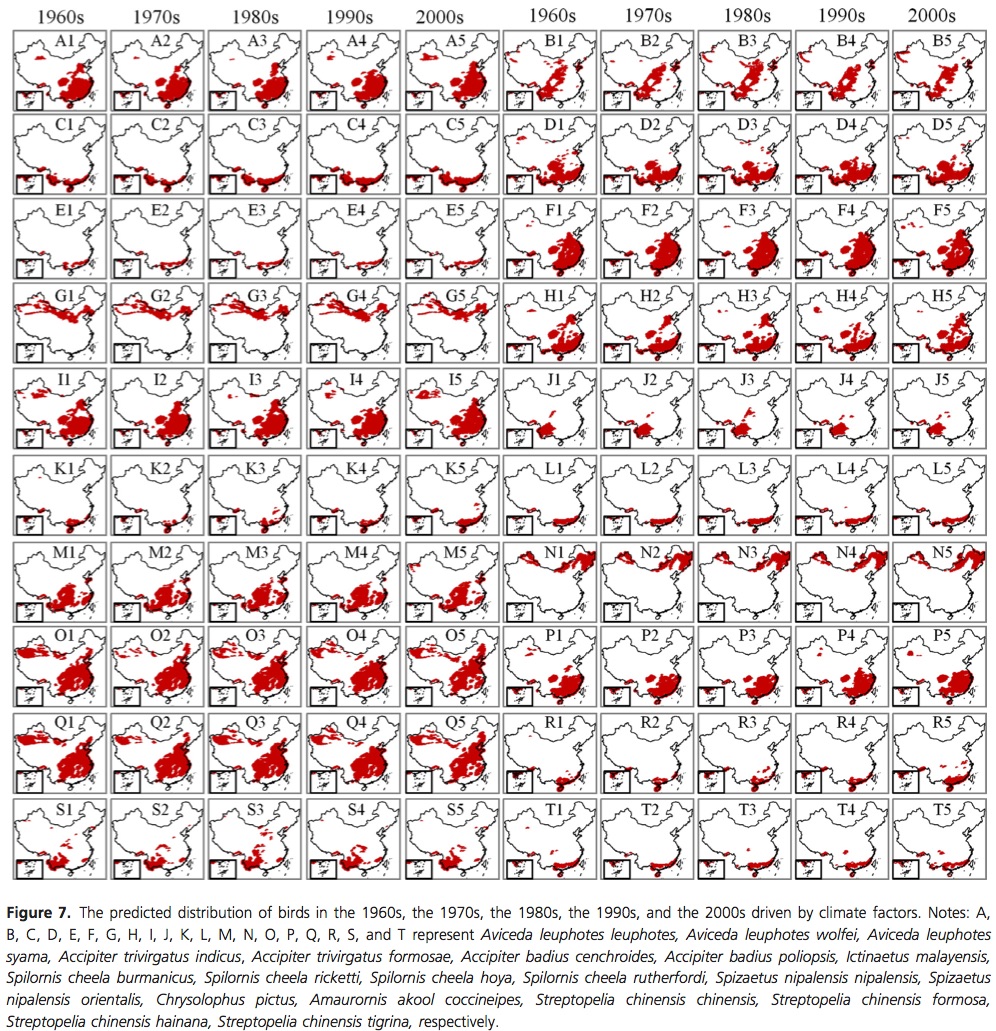Among vertebrates, birds may be the most sensitive to climate change. Over the past 100 years, the global mean air temperature has increased by 0.85°C. In the last decade, this shift in temperature has been accompanied by a northern shift of bird species in China. The author’s use species distribution models to ask if the rising temperature caused the changes in 9 resident bird species (20 subspecies) range over the last 50 years.
The 9 chosen species are endangered in China and have a large point distribution data set, additionally these birds have been found outside of the historical boundaries in recent years. Given that the dataset consists of presence-only data and uncertainty in the biotic and abiotic variables, the authors used a fuzzy envelope model trained on data from 1951-1960. Climate factors were chosen based on there influence on environmental suitability for reproduction. From this the suitability for each grid cell for each year between 1961-2010 was calculated. The total suitability for each grid was calculated by summing the suitability across the years. The model accuracy was evaluated using kappa-statistic (k) using the 1951-1960 as baseline for each decade.

The range centers of 7 species shifted northern, 6 species east, and 3 species west ward. The suitable range of 9 subspecies increased with climate changes, while others exhibited no change.
